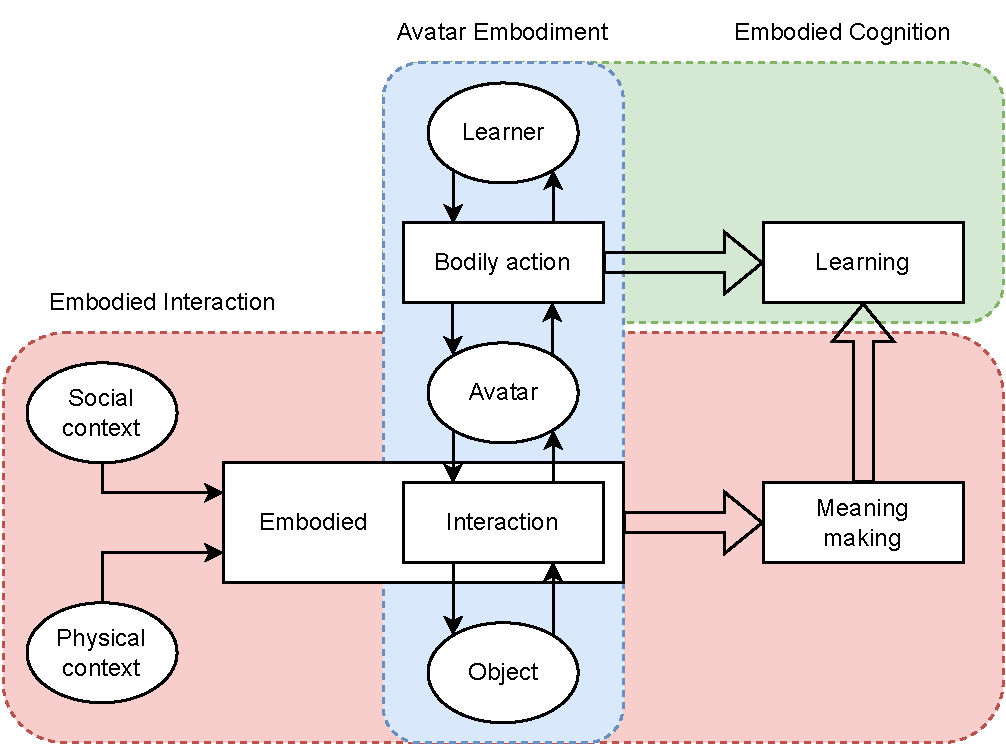Embodiment Landscape
Mar 2023Our paper, "Three Perspectives on Embodied Learning in Virtual Reality: Opportunities for Interaction Design", was published at CHI EA '23: Extended Abstracts of the 2023 CHI Conference on Human Factors in Computing Systems.

Abstract
With the fast evolution of Virtual Reality (VR) technology, new prospects opened for embodied learning. Learners can now manipulate digital representations of abstract concepts and make sense of them through sensorimotor stimulation. However, in research, embodiment is explored from several perspectives, which, we argue, should be considered within a same framework. In this paper, we describe three major perspectives relevant for embodied learning in VR: embodied cognition, embodied interaction, and avatar embodiment. We organize these perspectives within one common interdisciplinary framework, and discuss resulting design opportunities for VR embodied learning interactions. Specifically, we show that embodied interaction does not necessarily support embodied cognition, and that breaking recommendations of avatar embodiment can actually support meaning-making. We believe our work offers novel avenues for future research and will foster interesting conversations in the HCI community.
Teaser Video
Presentation Video
Three Perspectives on Embodiment

The Embodiment Landscape

Semantic Avatars
In our paper, we introduce the idea of "semantic avatars", that is digital avatars designed to highlight a specific meaning, explored through bodily actions. We provide examples of hand-based semantic avatars, as well as full-body semantic avatars, inspired from previous embodied learning activities but also offering new directions for future research.
Team
- Julia Chatain - Research, conception, paper writing.
- Prof. Dr. Manu Kapur - Learning Sciences supervision.
- Prof. Dr. Robert W. Sumner - Computer Science supervision.
Acknowledgments
We would like to thank:
- Charlotte Müller, Vera Baumgartner, Tiffany Luong, Henry Raymond and Dražen Popović for the insightful conversations and posing for the teaser picture,
- the students who participated in the user studies and their teachers for their feedback,
- the Future Learning Initiative of ETH Zurich for funding and support,
- and the reviewers for their constructive comments.
Publication
Chatain, Julia, Manu Kapur, Robert W. Sumner. "Three Perspectives on Embodied Learning in Virtual Reality: Opportunities for Interaction Design". In CHI EA ’23: Extended Abstracts of the 2023 CHI Conference on Human Factors in Computing Systems. (2023) (link) (pdf)
Poster - Chatain, Julia, Manu Kapur, Robert W. Sumner. "Three Perspectives on Embodied Learning in Virtual Reality: Opportunities for Interaction Design". In CHI EA ’23: Extended Abstracts of the 2023 CHI Conference on Human Factors in Computing Systems. (2023) (pdf)